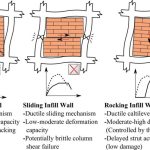India is considered to be one of the most populated countries with an average population of 382 persons per square kilometer. India is among one of the most disaster prone countries in which around 55% of the area is under severe risk regarding earthquake including the national capital Delhi. Thus, with the passing time now it is an important factor as witnessed in region of Himalayas, West India, Peninsular India and also Indo-Gangetic plain which had been visited by strong earthquakes.
As considered with the passage of time and massive destruction happened all across the country that the houses, buildings, factories etc is to be built using a proper code provisions as provided by the Bureau of Indian Standards (BIS) in the field of Earthquake resistant design of structures, i.e. IS 1893:1984 which clearly deals with the applicability of these standards to buildings, bridges, dams, multi storey or elevated buildings etc.
Initially published in 1962 as a recommendation for ERDS (Earthquake Resistant Design Structure) it was soon revised in 1966, with more seismic data revised in 1970, 1975, 1984.
The BIS code IS 1893:1984 basically deals with general principles and criteria for design of structures, involving load combinations, counter acting attributes of buildings, analysis, etc. In IS 1893:2002 the difference varies with structure properties.
The code was basically revised and modified with the following major factors such as :
- Seismic Zone map
- Calculation of actual force that could be experienced by the structure in the uttermost prone areas i.e. maximum earthquake condition
- Considering peak ground acceleration (PGA), calculating various values of seismic zone factors.
- Proper restriction to the foundation in severe seismic zones.
Being an important part of construction techniques, Earthquake resistant design is an important subject in the field of Civil Engineering. As civil engineering deals with the designing and analysis of structures, design of concrete structures, design of steel structures that is not possible without the proper consideration of the provisions mentioned in the earthquake resistant design structure code. ERDS plays a decisive role being a standard specifications for designing and construction purposes.



Comments are closed